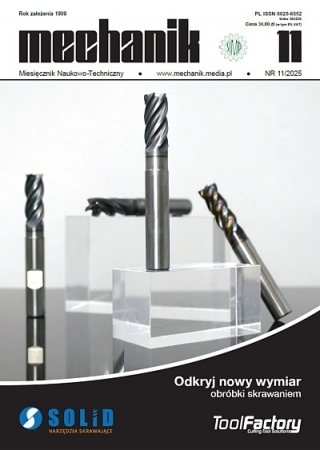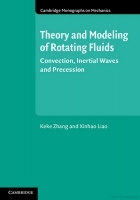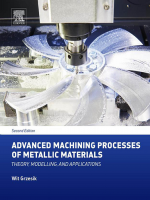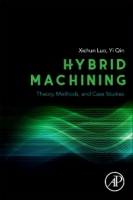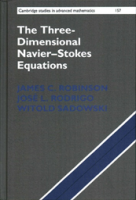Analysis of the selected machining factors influence on the milling process of grey cast iron
Analiza wpływu wybranych czynników obróbki na przebieg procesu frezowania żeliwa szarego *
Author: Piotr Ziarkowski, Kamil Klamczyński, Radosław Sójka, Natalia Kowalska, Sławomir Błasiak, Łukasz Nowakowski, Michał Skrzyniarz
Mechanik nr 11/2022 - Obróbka skrawaniem
ABSTRACT: The quality of the geometric structure of a surface is influenced by factors such as the geometry of the cutting tool, the cutting conditions and the displacements in the tool–workpiece system. This paper describes the results of a study to analyse the influence of selected machining factors accompanying the face milling process on the geometric structure of the surface. During the machining tests, relative displacements in the T–W system were recorded, as well as the components of forces and moments of the face milling process for specimens made of grey cast iron. The tests were carried out on an AVIA VMC 800 milling centre, and the accuracy of the machined surface was checked. A Talysurf CCI – Lite Non-contact 3D Profiler, which was equipped with TalyMap Platinum software, was used to measure the geometric structure of the surface.
KEYWORDS: machining, milling, grey cast iron, geometrical structure of the surface, components of cutting forces, relative movements
STRESZCZENIE: Na jakość struktury geometrycznej powierzchni wpływają takie czynniki, jak: geometria narzędzia skrawającego, warunki skrawania oraz przemieszczenia w układzie narzędzie–przedmiot obrabiany. W artykule opisano wyniki badań, których celem była analiza wpływu wybranych czynników obróbki towarzyszących procesowi frezowania czołowego na strukturę geometryczną powierzchni. W trakcie prób skrawania rejestrowano przemieszczenia względne w układzie N–P oraz składowe sił i momentów procesu frezowania walcowo-czołowego próbek wykonanych z żeliwa szarego. Próby przeprowadzono na centrum frezarskim AVIA VMC 800. Sprawdzono dokładność wykonania powierzchni poddanej obróbce frezarskiej. Strukturę geometryczną powierzchni zmierzono profilometrem Talysurf CCI – Lite Non-contact 3D Profiler, wyposażonym w oprogramowanie TalyMap Platinum.
SŁOWA KLUCZOWE: obróbka skrawaniem, frezowanie, żeliwo szare, struktura geometryczna powierzchni, składowe sił skrawania, przemieszczenia względne
BIBLIOGRAFIA / BIBLIOGRAPHY:
[1] Tatar K., Gren P. “Measurement of milling tool vibrations during cutting using laser vibrometry”. International Journal of Machine Tools and Manufacture. 48, 3–4 (2008): 380–387, https://doi.org/10.1016/j.ijmachtools.2007.09.009.
[2] Franco P., Estrems M., Faura F. “A study of back cutting surface finish from tool errors and machine tool deviations during face milling”. International Journal of Machine Tools and Manufacture. 48, 1 (2008): 112–123, https://doi.org/10.1016/j.ijmachtools.2007.07.001.
[3] Benardos P.G., Vosniakos G.-C. “Predicting surface roughness in machining: a review”. International Journal of Machine Tools and Manufacture. 43, 8 (2003): 833–844, https://doi.org/10.1016/S0890-6955(03)00059-2.
[4] Shanshin I.K., Shagniev O.B., Burdakov S.F. “Adaptiveself-excited vibrations suppression during milling”. Journal of Physics: Conference Series. 1236, 1 (2019): 12051, https://doi.org/10.1088/1742-6596/ 1236/1/012051.
[5]Skrzyniarz M., Nowakowski Ł., Miko E. “Development ofa measurement method of relative displacements of thetool and the workpiece during turning”. Mechanik. 8–9(2015): 728/577-728/585, https://doi.org/10.17814/mechanik.2015.8-9.470.
[6]Miko E., Nowakowski Ł. “Analysis and Verification ofSurface Roughness Constitution Model After MachiningProcess”. Procedia Engineering. 39 (2012): 395–404,https://doi.org/10.1016/j.proeng.2012.07.043.
[7]Heisel U., Milberg J. “Vibrations and Surface Generationin Slab Milling”. CIRP Annals. 43, 1 (1994): 337–340,https://doi.org/10.1016/S0007-8506(07)62226-4.
[8]Jang D.Y., Choi Y.-G., Kim H.-G., Hsiao A. “Study of the correlation between surface roughness and cutting vibrations to develop an on-line roughness measuring technique in hard turning”. International Journal of Machine Tools and Manufacture. 36, 4 (1996): 453–464, https://doi.org/10.1016/0890-6955%2895%2900074-7.
[9]Altintas Y., Engin S. “Generalized Modeling of Mechanics and Dynamics of Milling Cutters”. CIRP Annals. 50,1 (2001): 25–30, https://doi.org/10.1016/S0007-8506(07)62063-0.
[10]Miko E. „Konstytuowanie mikronierówności powierzchni metalowych obrobionych narzędziami o zdefiniowanej stereometrii ostrzy”. Kielce: Wydaw. PŚ (2004).
[11]Cieloszyk J. „Badanie wpływu wybranych czynnikówgeometrycznych i kinematycznych na stan obrobionejpowierzchni w procesie frezowania czołowego”. Rozprawa doktorska. Wydział Mechaniczny PolitechnikiSzczecińskiej Szczecin (1992).
[12]Kyun Baek D., Jo Ko T., Sool Kim H., “A dynamic surfaceroughness model for face milling”. Precision Engineering. 20, 3 (1997): 171–178, https://doi.org/10.1016/S0141-6359(97)00043-3.
[13]Baek D.K., Ko T.J., Kim H.S., “Optimization of feedrate in a face milling operation using a surface roughness model”. International Journal of Machine Toolsand Manufacture. 41, 3 (2001): 451–462, https://doi.org/10.1016/S0890-6955(00)00039-0.
[14]Albrecht A., Park S.S., Altintas Y., Pritschow G., “Highfrequency bandwidth cutting force measurement inmilling using capacitance displacement sensors”. International Journal of Machine Tools and Manufacture.45, 9 (2005): 993–1008, https://doi.org/10.1016/j.ijmachtools.2004.11.028.
[15]Kuczmaszewski J., Pieśko P., Zawada-Michałowska M.“Analysis of cutting forces during in-cut and out-cut milling of EN AC-AlSi10Mg cast aluminum alloy”. Mechanik. 91, 10 (2018): 871–873, https://doi.org/10.17814/mechanik.2018.10.148.
[16]Nowakowski Ł. „Wpływ wybranych czynników obróbkina strukturę geometryczną powierzchni frezowanychczołowo”. Rozprawa Doktorska. Kielce: PolitechnikaŚwiętokrzyska (2014).
DOI: https://doi.org/10.17814/mechanik.2022.11.22
* Artykuł recenzowany





